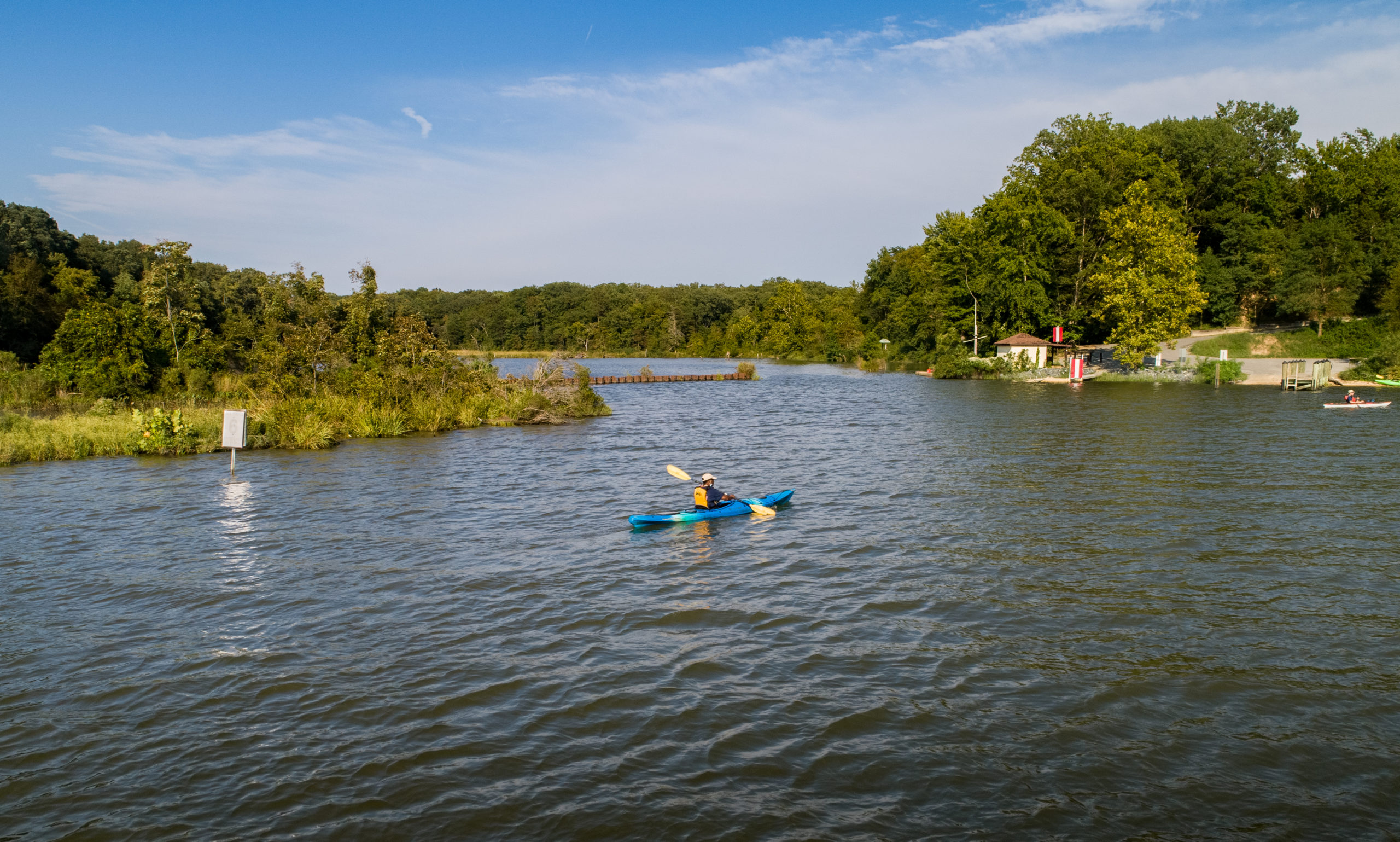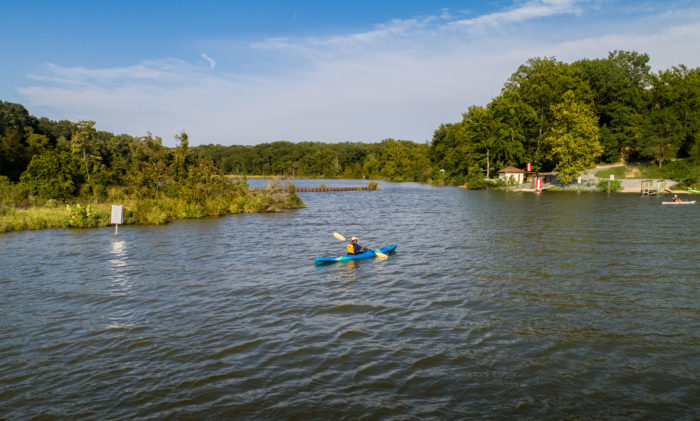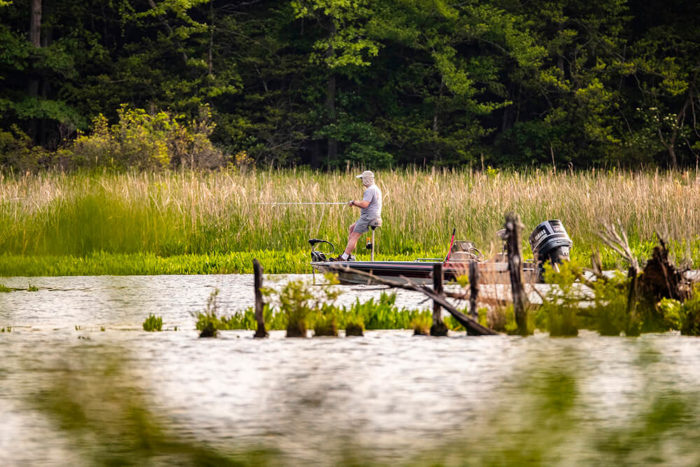
What is an Estuary?

A kayaker paddles through Mallows Bay-Potomac River National Marine Sanctuary. Photo credit: Matt McIntosh
Estuaries are important contributors to the health of ecosystems on land and in the ocean. But what exactly are they – and why do they matter?
The definition of an estuary is an area where a freshwater river or stream meets the ocean. The mixing of salt and freshwater creates what is known as brackish water, the salinity of which can be as low as 0.5 parts per thousand or as high as 35 parts per thousand. With changes in water flows from these rivers and streams, and rising and waning tides of salty ocean water throughout the year, estuaries are dynamic ecosystems.
Since conditions within a single estuary can change drastically throughout a single day, no two estuaries are the same. There are four different kinds of estuaries, each formed in a different way. These include coastal plain estuaries, tectonic estuaries, bar-built estuaries, and fjord estuaries. Freshwater estuaries exist but they are rare – they occur where rivers and streams dilute massive bodies of freshwater, like the Great Lakes. Mallows Bay National Marine Sanctuary is located in the Potomac River, a major tributary of the Chesapeake Bay, which is the largest estuary in the United States.
Healthy estuaries have value for ecological communities and human society alike. Many of the world’s earliest human civilizations developed around estuaries due to the secure sources of food and water they provided for people and their livestock. The nutrient rich waters of estuaries support many forms of life, including bacteria, plankton, plants, and larger animals. Many species found across the National Marine Sanctuary System start their lives sheltered in coastal estuaries. Estuaries are often economic centers of coastal communities and oceanic food webs, providing habitat for more than 75 percent of the U.S. commercial fish catch at some point during their life cycles. Estuaries also support transportation and trade in the form of shipping and recreation. Millions of people visit estuaries each year to boat, swim, fish, and view wildlife, contributing billions of dollars to coastal economies each year.
To learn more about estuaries, the species that call them home, and how they support healthy coasts and ocean habitats, visit NOAA’s website about the National Estuarine Research Reserve System.

An angler goes fishing near Mallows Bay-Potomac River National Marine Sanctuary. Photo credit: NOAA
